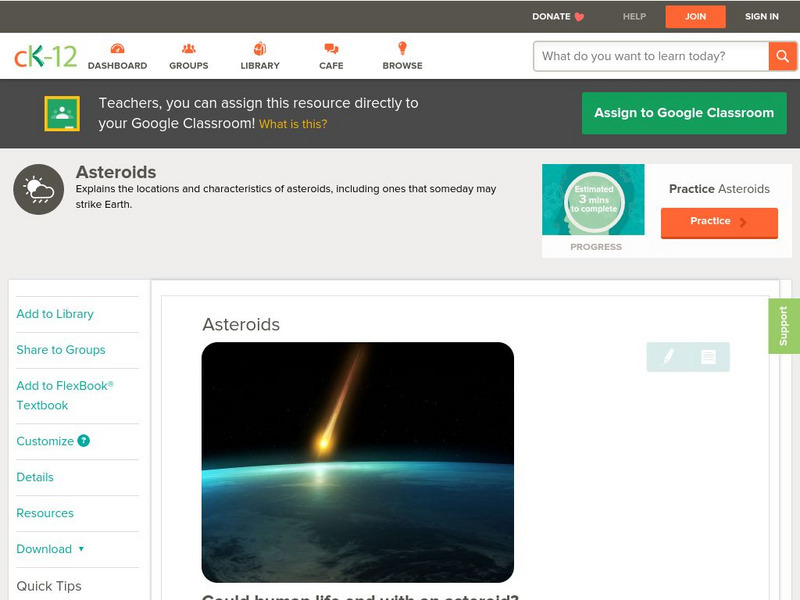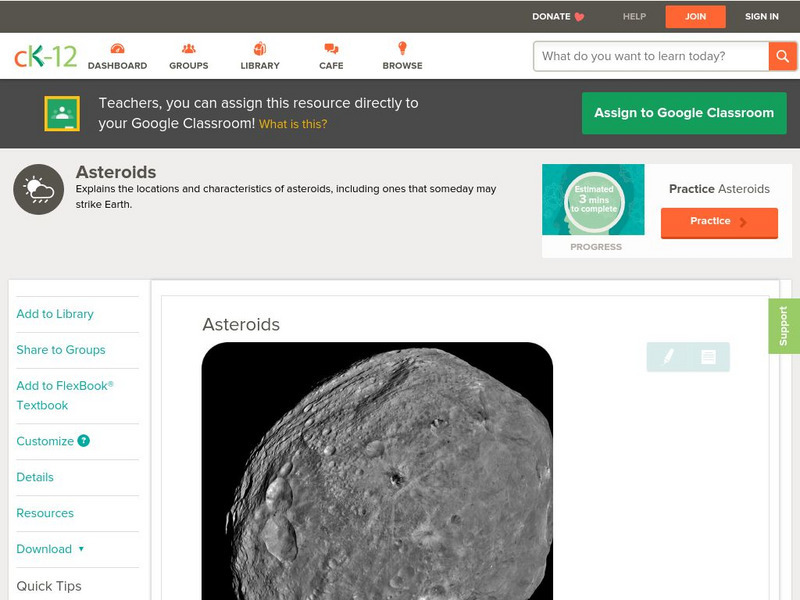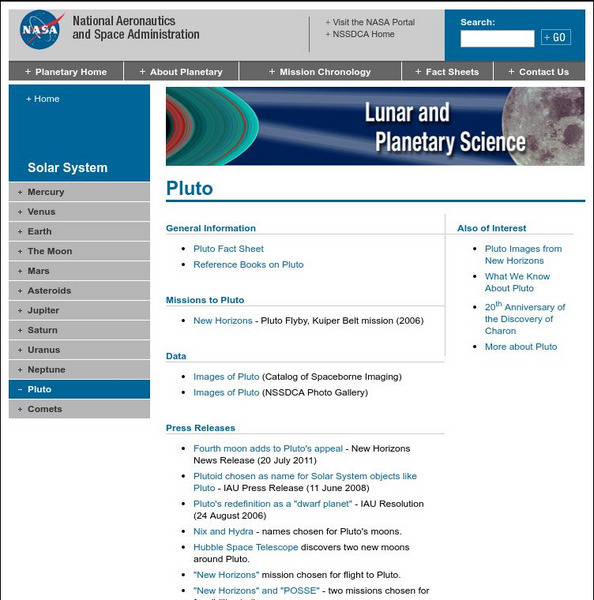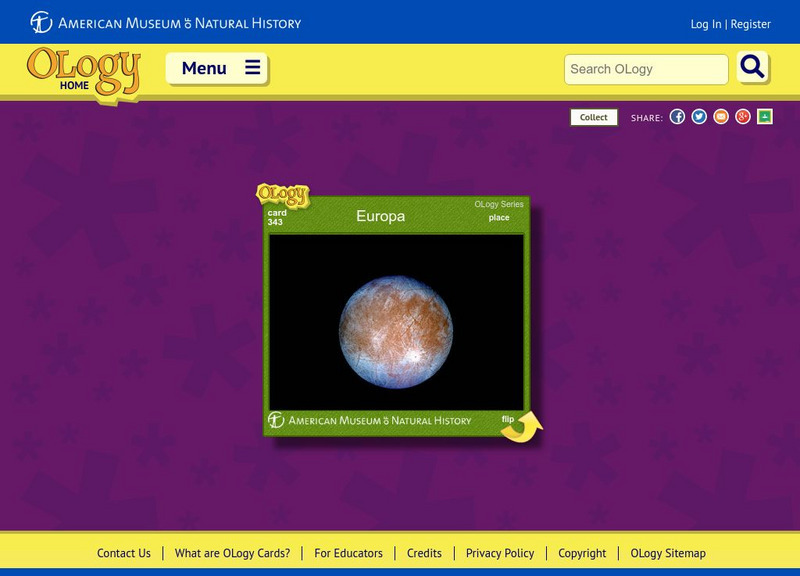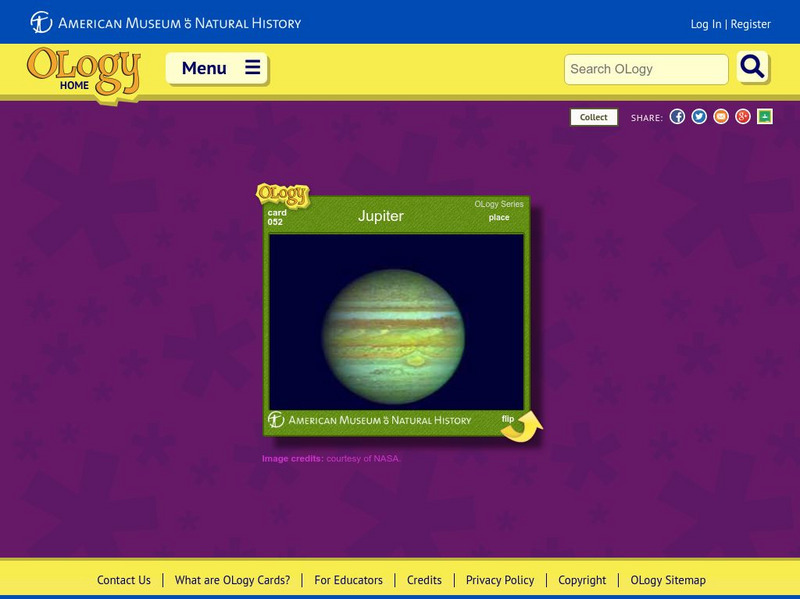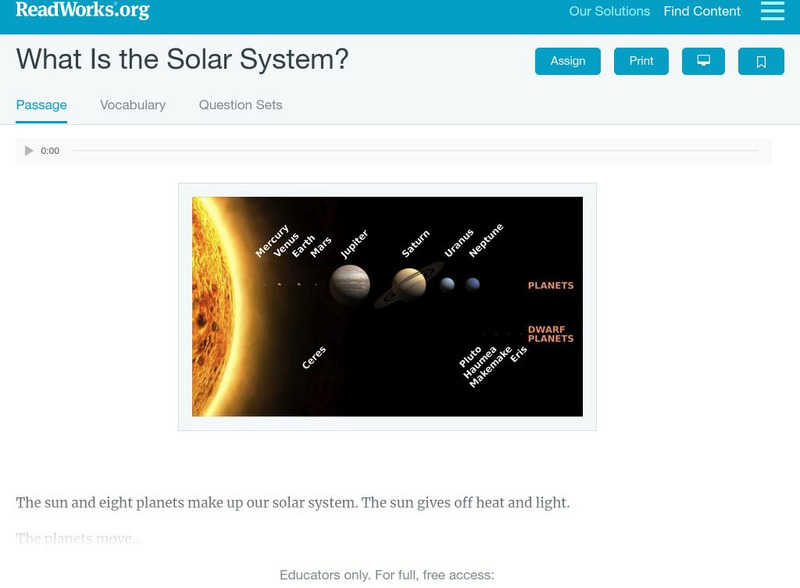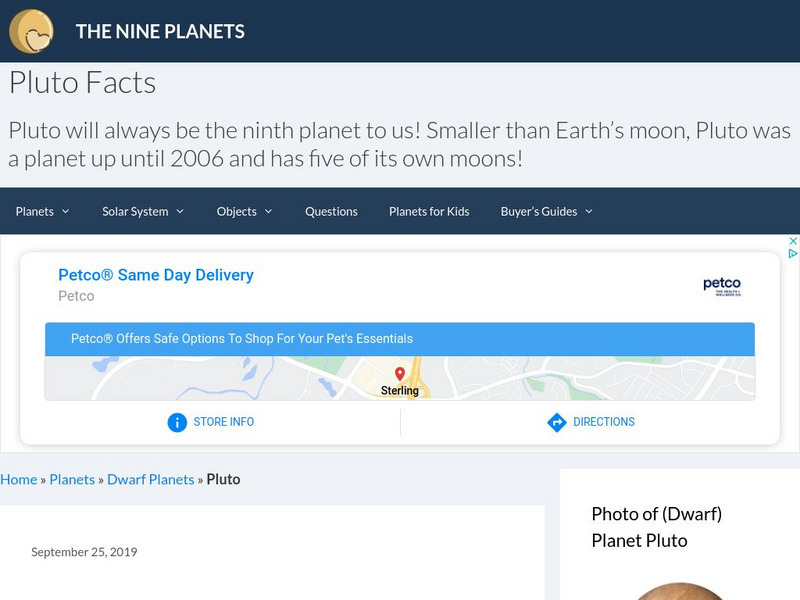CK-12 Foundation
Ck 12: Earth Science: Asteroids
[Free Registration/Login may be required to access all resource tools.] Describes characteristics of asteroids.
CK-12 Foundation
Ck 12: Earth Science: Asteroids
[Free Registration/Login may be required to access all resource tools.] Describes characteristics of asteroids.
CK-12 Foundation
Ck 12: Earth Science: Exoplanets
[Free Registration/Login may be required to access all resource tools.] Describes the features of exoplanets.
CK-12 Foundation
Ck 12: Earth Science: Exoplanets
[Free Registration/Login may be required to access all resource tools.] Describes the features of exoplanets.
CK-12 Foundation
Ck 12: Earth Science: Jupiter
[Free Registration/Login may be required to access all resource tools.] Recognize the features of the planet Jupiter, including the Great Red Spot.
CK-12 Foundation
Ck 12: Earth Science: Jupiter
[Free Registration/Login may be required to access all resource tools.] Recognize the features of the planet Jupiter, including the Great Red Spot.
NASA
Nasa Space Science Data Archive: Pluto
This site, which is provided by the National Space Science Data Center of NASA, is a site with detailed information about Pluto, including planned missions to explore the planet in greater detail.
NASA
Nasa: Space Place: Messenger: Planet Mass Comparison
Compare the masses of planets in this interactive animation. Simply pile a number of Earths on one side of the scale, to balance with the mass of one Jupiter. Then try this with all the planets.
American Museum of Natural History
American Museum of Natural History: Solar System O Logy Card
Here's an Ology Card about the Solar System, offering a small image, a definition, and information on how "far out" our Solar System is. Includes questions to quiz your knowledge and quick facts about the Solar System's size, rotation...
American Museum of Natural History
American Museum of Natural History: Venus O Logy Card
Flip this interactive card to start learning about the planet Venus. Answer multiple-choice and fact-or-fiction questions and review some fast facts about Venus.
American Museum of Natural History
American Museum of Natural History: Europa O Logy Card
Flip this interactive card to start learning about Europa, one of Jupiter's largest moons. Answer multiple-choice and fact-or-fiction questions and review some fast facts about Europa.
American Museum of Natural History
American Museum of Natural History: Craters O Logy Card
Flip this interactive card to start learning about craters. Answer multiple-choice and fact-or-fiction questions and review some fast facts.
American Museum of Natural History
American Museum of Natural History: Jupiter O Logy Card
Flip this interactive card to start learning about Jupiter, the largest planet in our solar system. Answer multiple-choice and fact-or-fiction questions and review some fast facts about Jupiter.
American Museum of Natural History
American Museum of Natural History: Saturn O Logy Card
Flip this interactive card to start learning about the planet Saturn. Answer multiple-choice and fact-or-fiction questions and review some fast facts about the second largest planet in our solar system.
NASA
Nasa: Sci Jinks: How's the Weather on Other Planets?
Compare weather here on Earth to other planets and moons in our solar system. You will find many similarities and differences.
Read Works
Read Works: Crash Test
[Free Registration/Login Required] An informational text about a scientist who studies collisions. A question sheet is available to help students build skills in reading comprehension.
Read Works
Read Works: What Is the Solar System?
[Free Registration/Login Required] An informational text about the solar system. A question sheet is available to help students build skills in reading comprehension.
CK-12 Foundation
Ck 12: Earth Science: Inner Versus Outer Planets
[Free Registration/Login may be required to access all resource tools.] Compares the characteristics of inner and outer planets.
CK-12 Foundation
Ck 12: Earth Science: Inner Versus Outer Planets
[Free Registration/Login may be required to access all resource tools.] Compares the characteristics of inner and outer planets.
National Earth Science Teachers Association
Windows to the Universe: Our Solar System
Our solar system is filled with a wide assortment of celestial bodies - the Sun itself, our eight planets, dwarf planets, and asteroids - and on Earth, life itself! The inner solar system is occasionally visited by comets that loop in...
American Museum of Natural History
American Museum of Natural History: Ology: What Do You Know About Stars?
Test your knowledge with this ten-question quiz on stars. Focusing on stars in the Milky Way galaxy, questions range from the life cycle of a star to the number of stars in our galaxy.
Nine Planets
The Nine Planets: Uranus
An excellent report on the planet Uranus. The site includes detailed information about the planet as well as links to information about Uranus moons, unmanned probes sent to explore Uranus, and an extensive set of images of the planet.
Nine Planets
The Nine Planets: Pluto
This site contains copious information about Pluto. The site contains descriptive and statistical information, as well as a detailed article about the search for trans-Plutonian planets and the "Nemesis" hypothesis.
Nine Planets
The Nine Planets: Small Bodies
This site explores the smaller bodies in the solar system, namely the various asteroids and comets. Links are also provided for additional information on related subjects.
